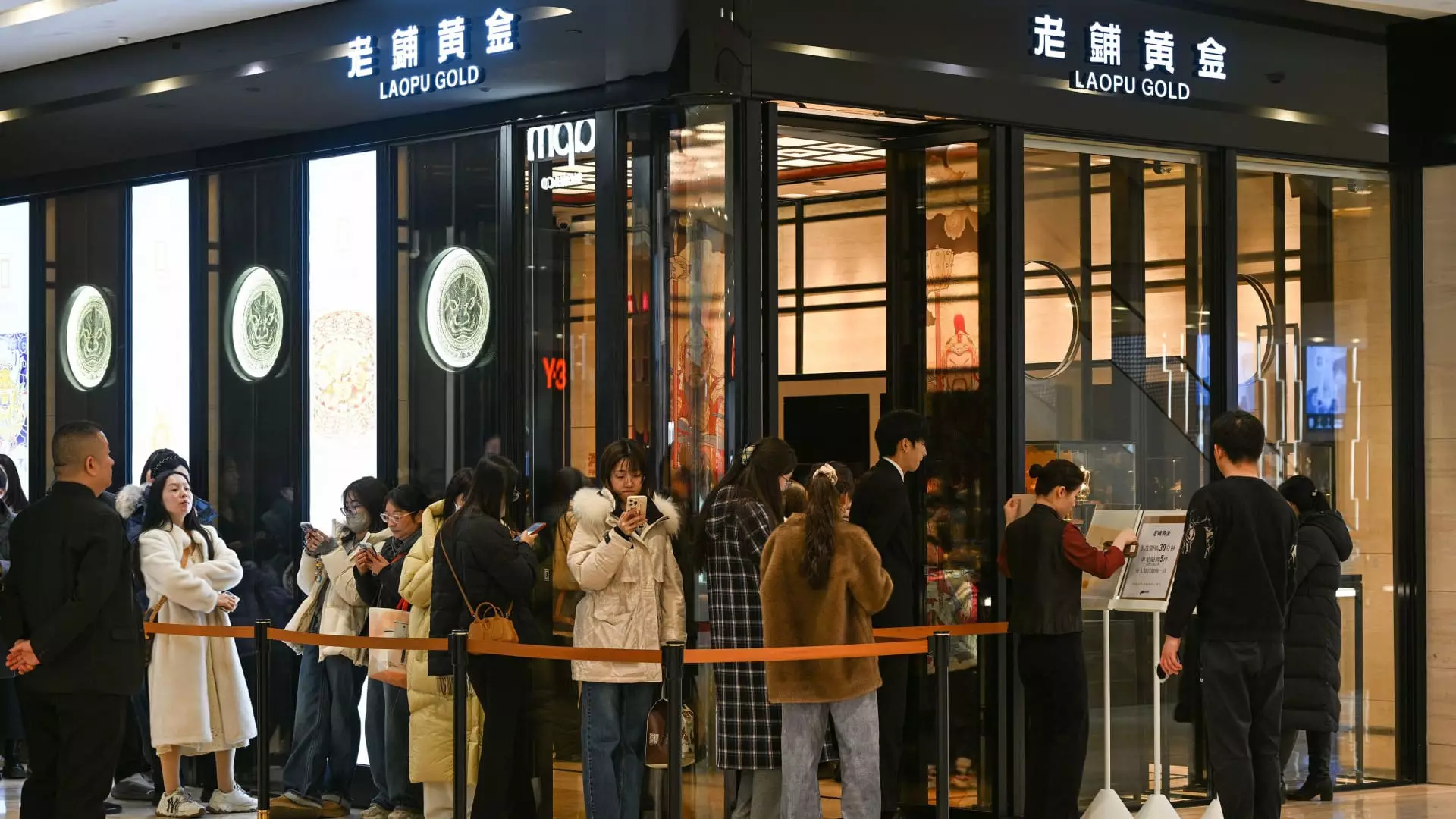China’s consumer spending recovery is a complex web of optimism and lingering caution. The latest earnings reports from major e-commerce players like Alibaba and JD.com show an encouraging uptick in year-on-year revenue growth. However, this growth, while a step in the right direction, does not quite match the pre-pandemic vigor that once drove China’s economic engine. It leaves us to wonder: are we genuinely witnessing a sustainable recovery, or are these businesses simply benefitting from a temporary bounce-back fueled by selective government policies?
Charlie Chen, head of Asia research at China Renaissance Securities, aptly characterizes the current consumer landscape as “in a period of healthy recovery, but not [yet reaching] the high previously.” This indicates that while we may be moving forward, we’re doing so on a fragile foundation. Economic recovery should be viewed through a lens of skepticism rather than blind optimism, particularly in light of the broader social and economic factors that influence consumer sentiment. The recent real estate slump, for instance, has significantly dampened consumers’ financial confidence, underscoring the economic incongruities that remain unresolved.
Government Intervention: The Double-Edged Sword
Chinese policymakers have made it clear that revitalizing consumption is at the top of their agenda. Initiatives such as expanding trade-in subsidy programs to include a variety of consumer goods, from smartphones to home appliances, exemplify this intent. But are such measures enough to stimulate consumer enthusiasm? The superficial boost in revenue from companies like JD.com, which saw a year-on-year sales growth of 15.8% in electronics and home appliances, does not mask the reality of only 4.9% segment growth over the full year — the slowest since 2021.
When looking closely at the government’s strategy, one can’t help but notice that reliance on stimulus and subsidies often breeds an economic homeostasis that stifles genuine growth. The authorities are acting like a parent who gives pocket money to foster a sense of financial security while failing to instill the values of hard work and resilience. It’s a net positive that the government is focused on consumption, but there needs to be a structural shift toward enhancing consumer confidence and independence in the market. Otherwise, we run the risk of establishing a dependency on short-term fixes rather than promoting sustained economic recovery.
A Shifting Economic Landscape: The Niche Narratives
While many companies still face challenges in the recovery landscape, some have skillfully carved out niche markets that resonate well with consumers. Businesses like Laopu Gold, which reported staggering net profit increases of 236%, showcase that there is an appetite for luxury goods that cater to traditional aesthetics within the modern market. Similarly, the toy company Pop Mart noted more than double the revenue last year, a testament to the durability of consumer interest in innovative and collectible products.
Moreover, e-scooter manufacturer Niu Technologies illustrated a more than 80% surge in sales, attributed to its focus on premium models and retail expansion. These examples indicate that there are pockets of robust consumption where certain products reign supreme, even amid broader challenges. Yet the contrast between these success stories and the stagnation seen in other sectors raises questions: Is consumer spending genuinely recovering, or are we merely witnessing a few bright spots in an otherwise dim economic landscape?
The Broader Market: A Battleground of Discounts
As China’s consumer market evolves, competition has intensified. Electric car companies undercut their prices, and retailers struggle to keep up with heavy online discounts, forcing operators across various sectors into a corner. The competitive displacement has led to observable declines in same-store sales, as seen with beverage chains that span from bubble tea to coffee. For instance, Guming experienced a 0.7% drop in same-store sales in the first nine months of 2024.
This scenario poses a troubling question: who really benefits from the current market dynamics? While aggressive pricing strategies may provide consumers with lower prices, they simultaneously jeopardize the viability of businesses that cannot compete on those terms. The relentless pursuit of discounts may ultimately result in a race to the bottom that destabilizes the very industries meant to drive economic recovery.
A Perspective on Future Growth: The Need for Sustainable Solutions
Looking ahead, the notion of recovery in consumer spending should be approached with cautious optimism. Current government policies are undoubtedly aimed at stimulating spending, but they must transition from reactive short-term measures to proactive long-term solutions that build consumer confidence and restore financial health. An all-encompassing economic strategy will be essential in fostering an environment where consumers feel secure enough to spend without relying on subsidies or monetary incentives.
Thus, it becomes imperative that Chinese policymakers craft initiatives that not only stimulate consumer behavior but also fortify the framework of trust and stability within the market. Without these elements in place, the narrative of recovery may prove to be nothing more than a fleeting moment in China’s broader economic saga.

